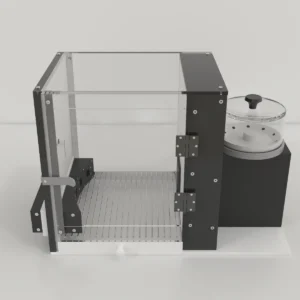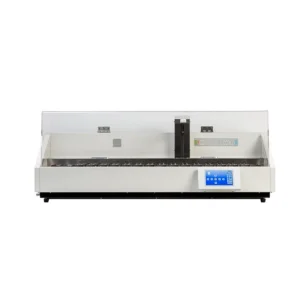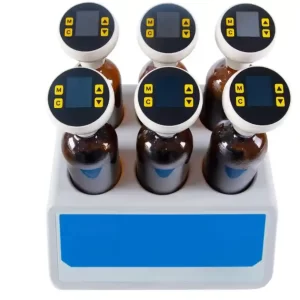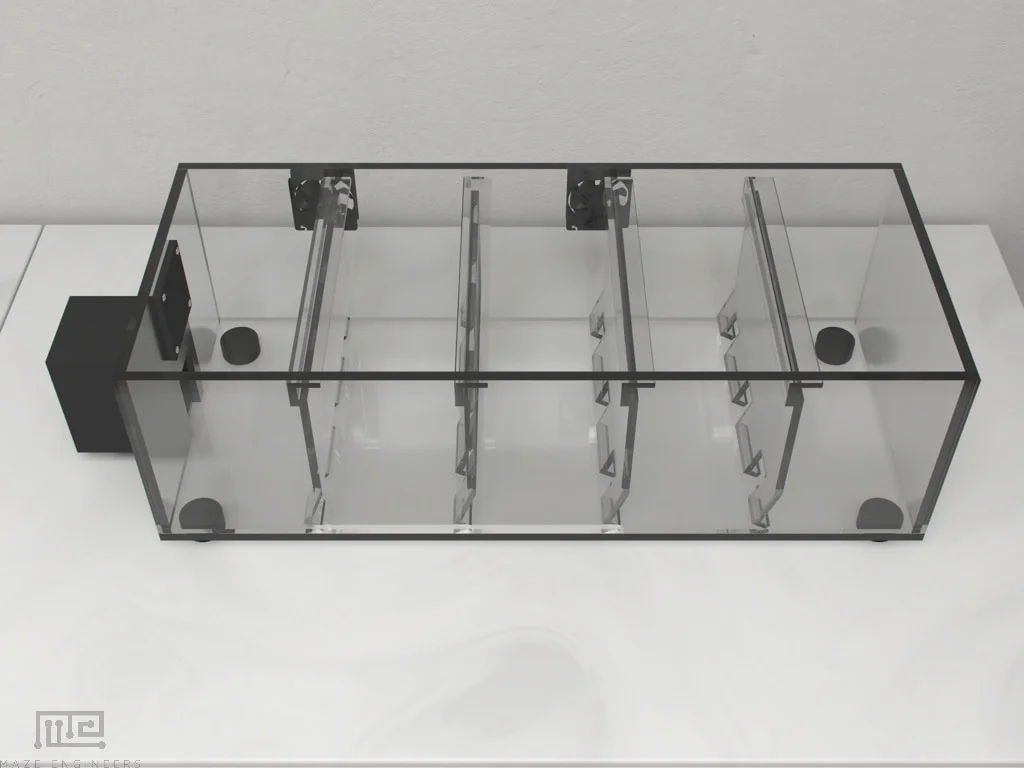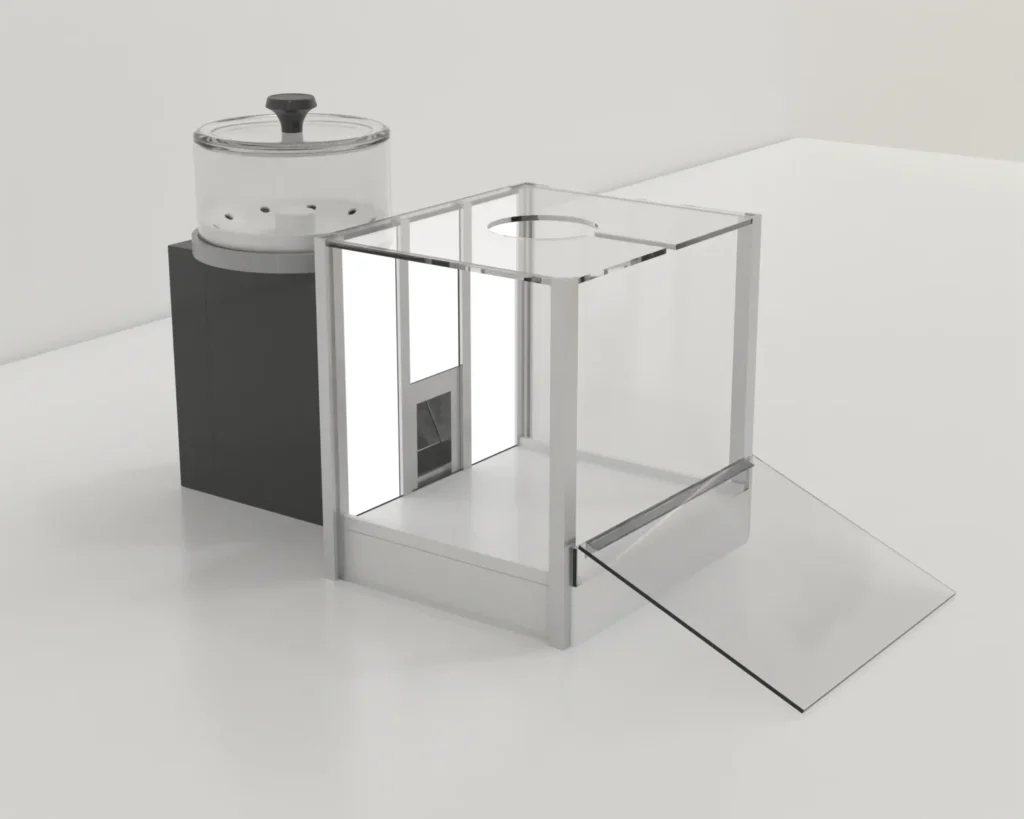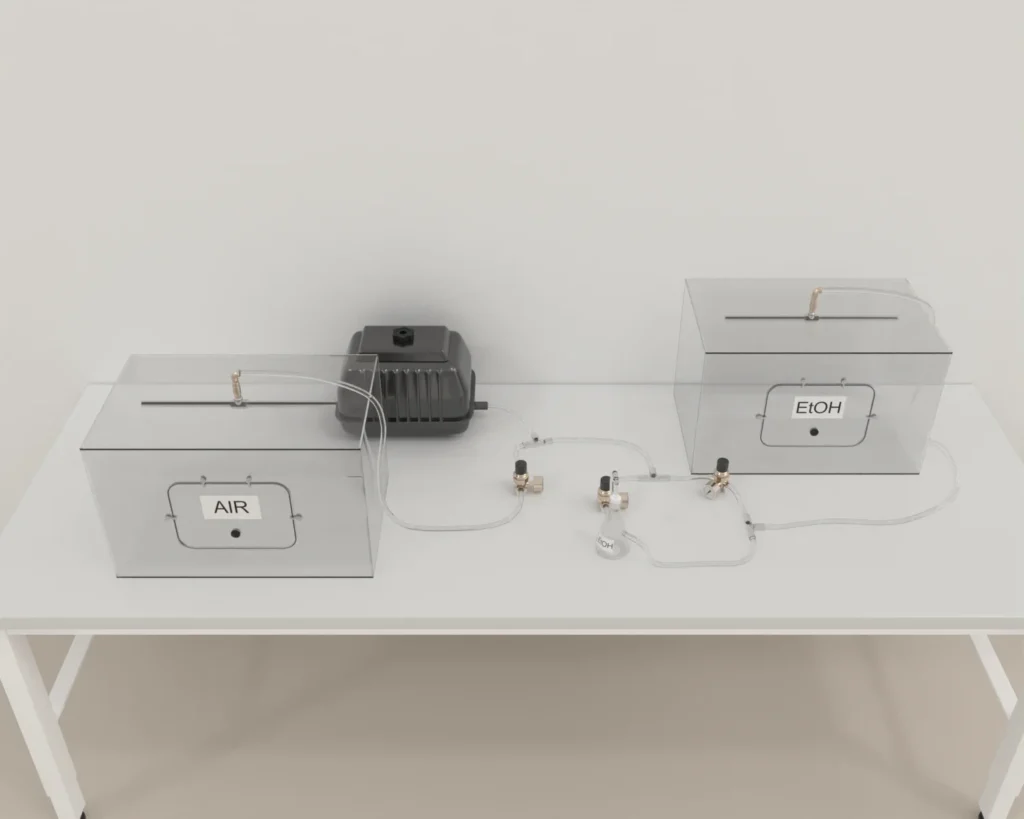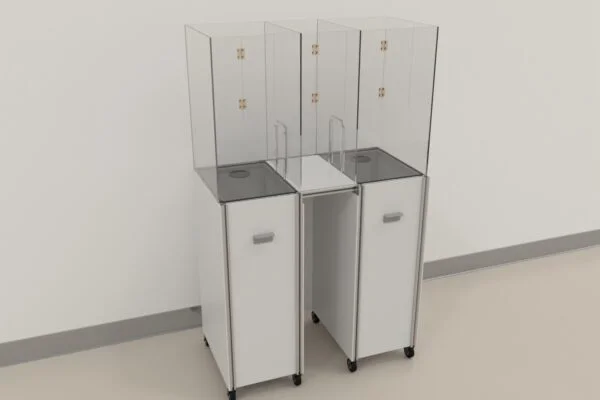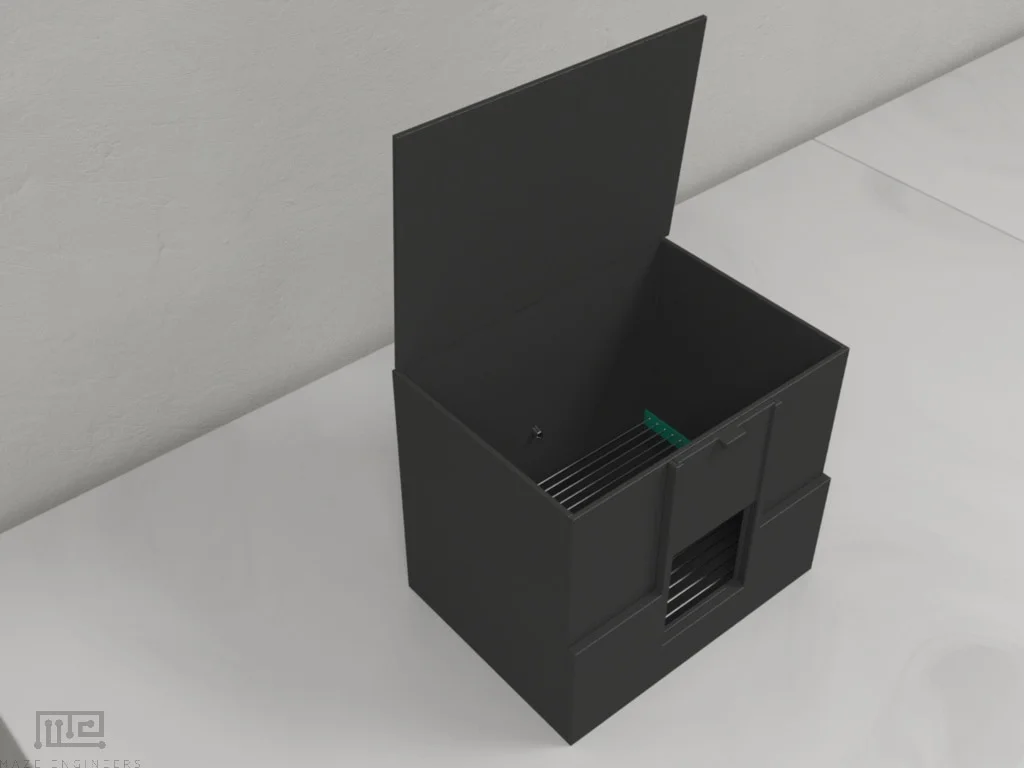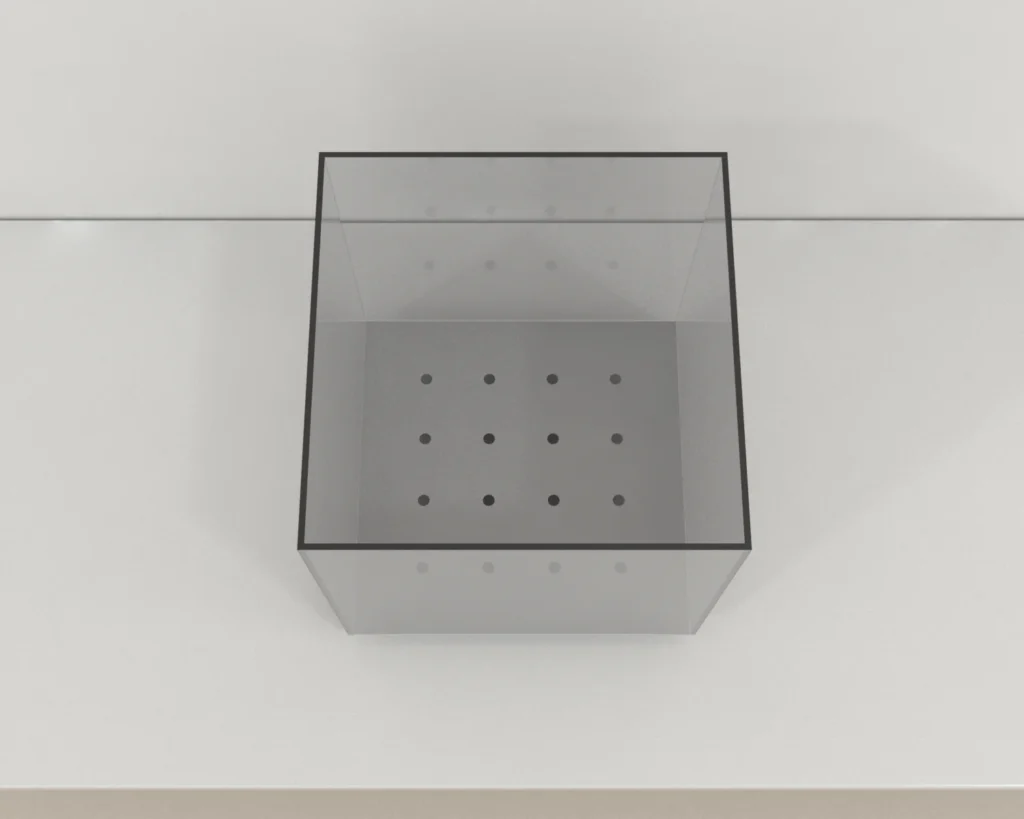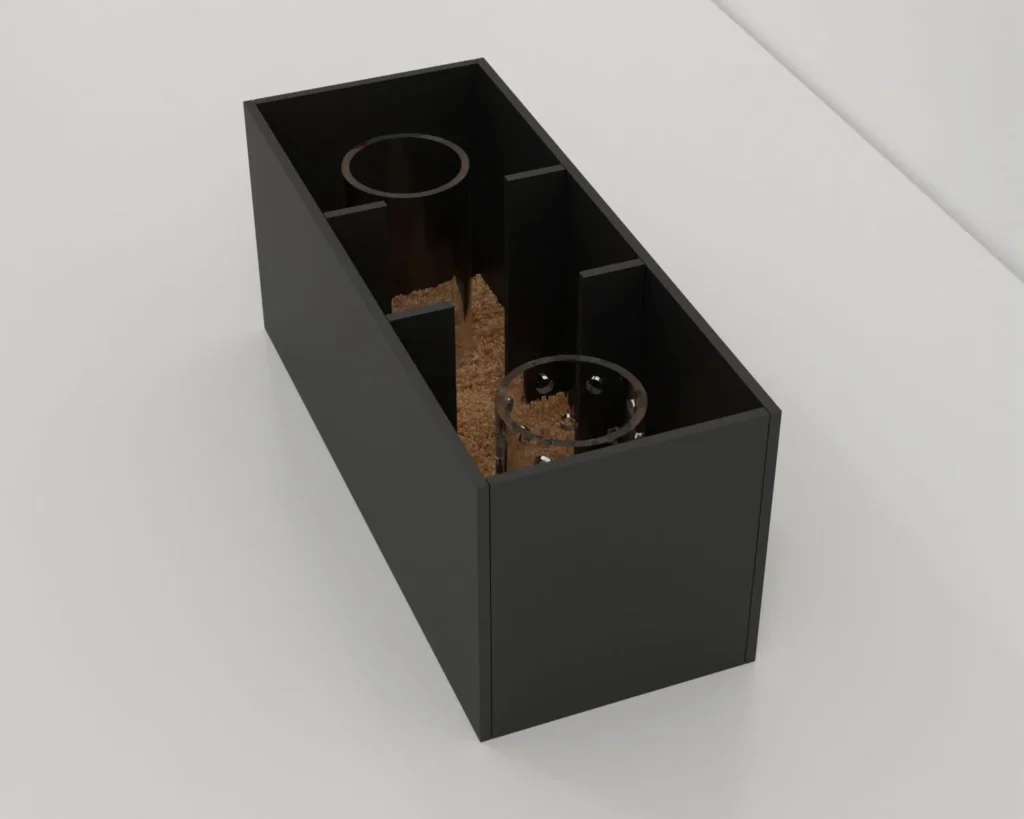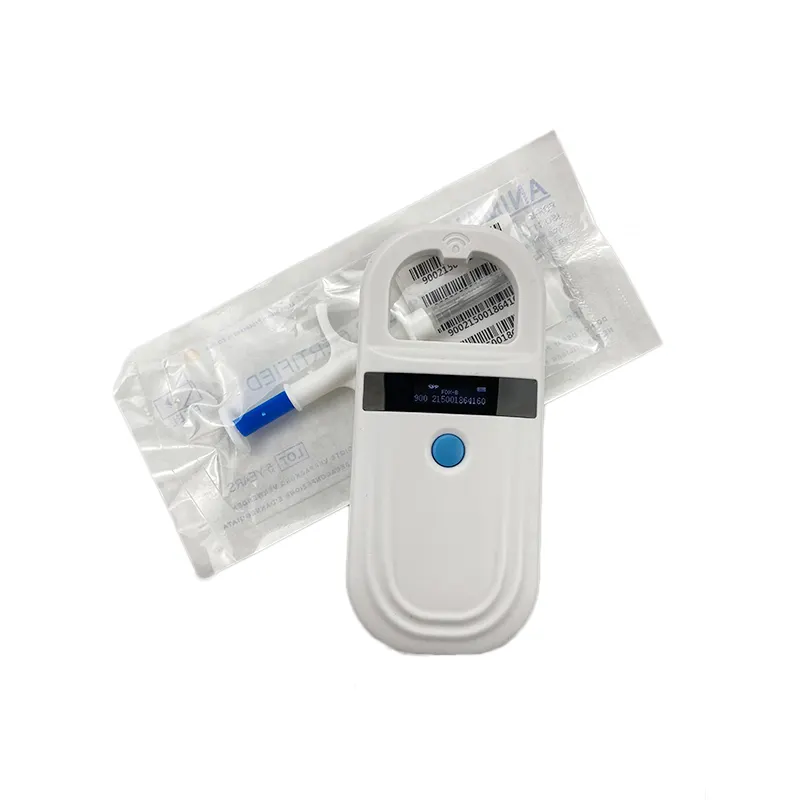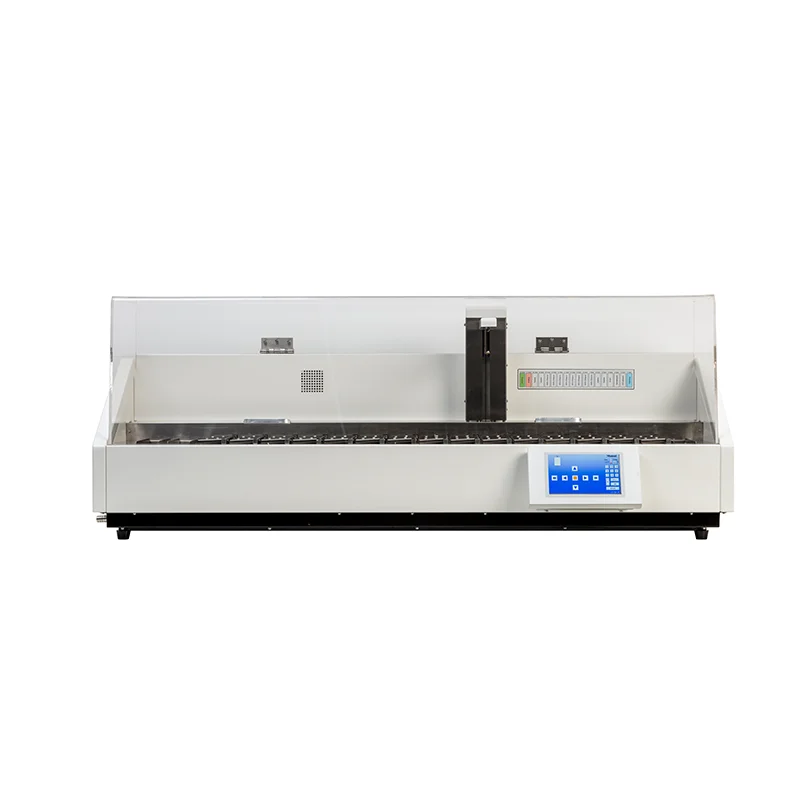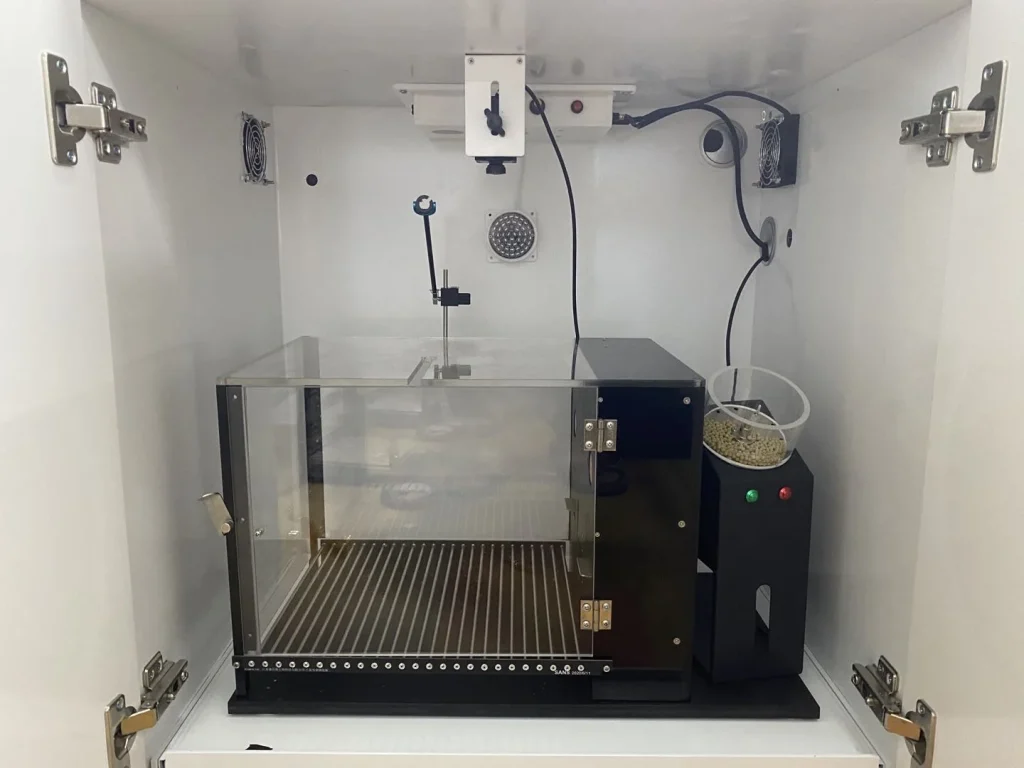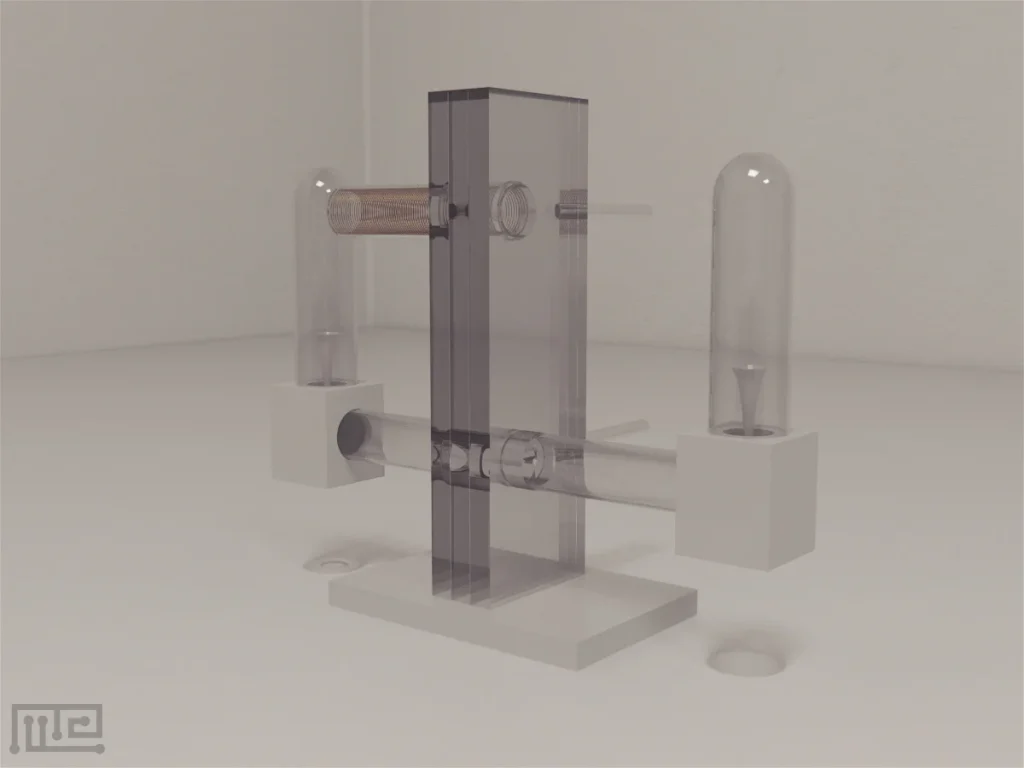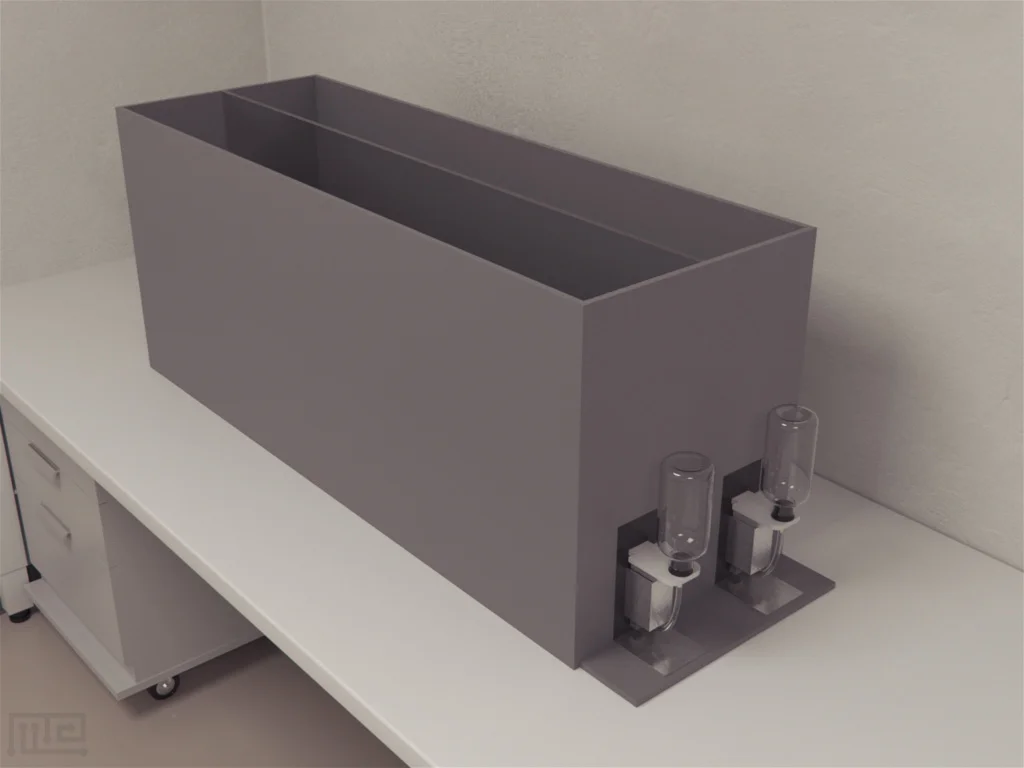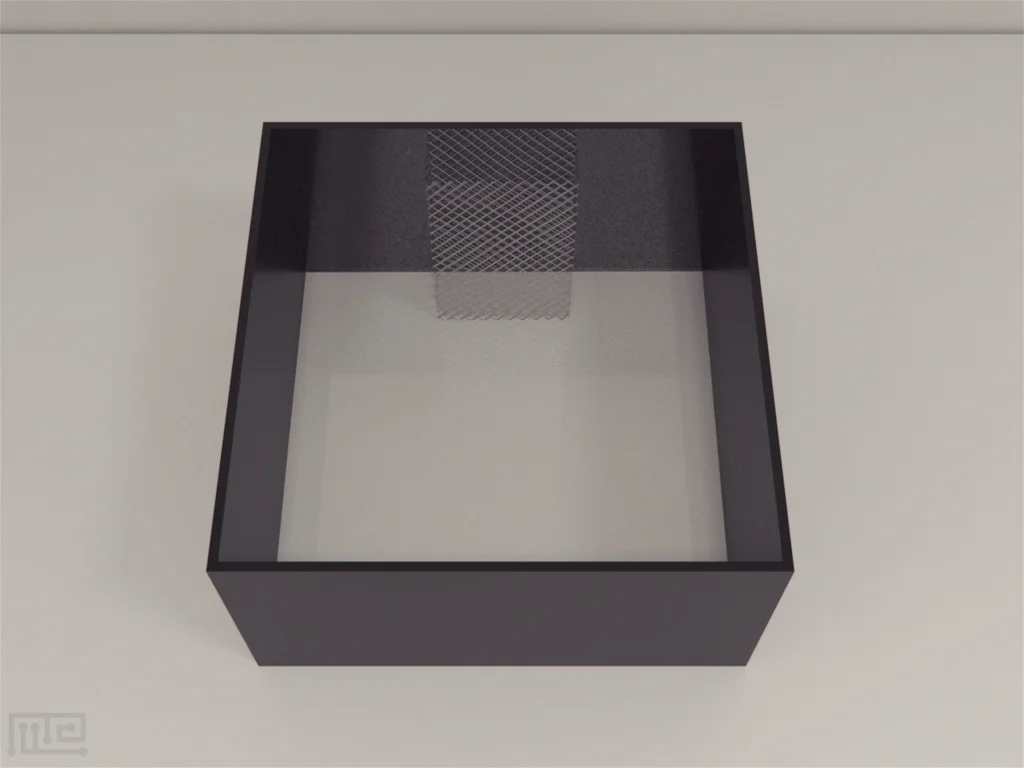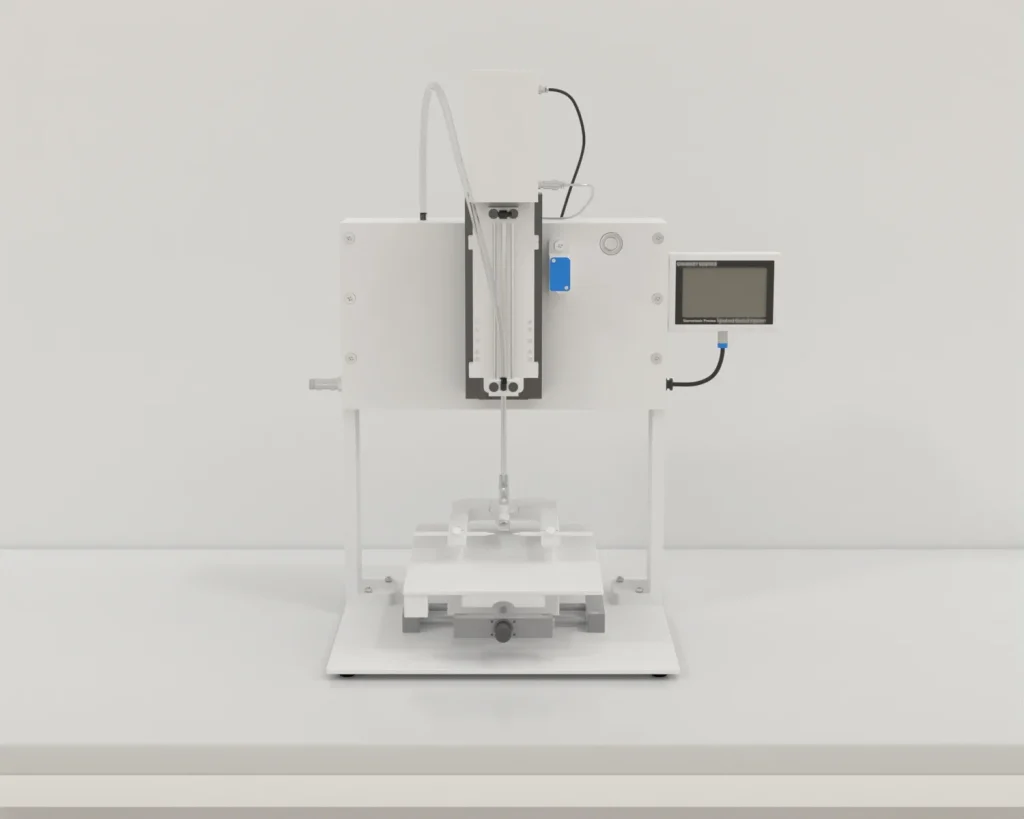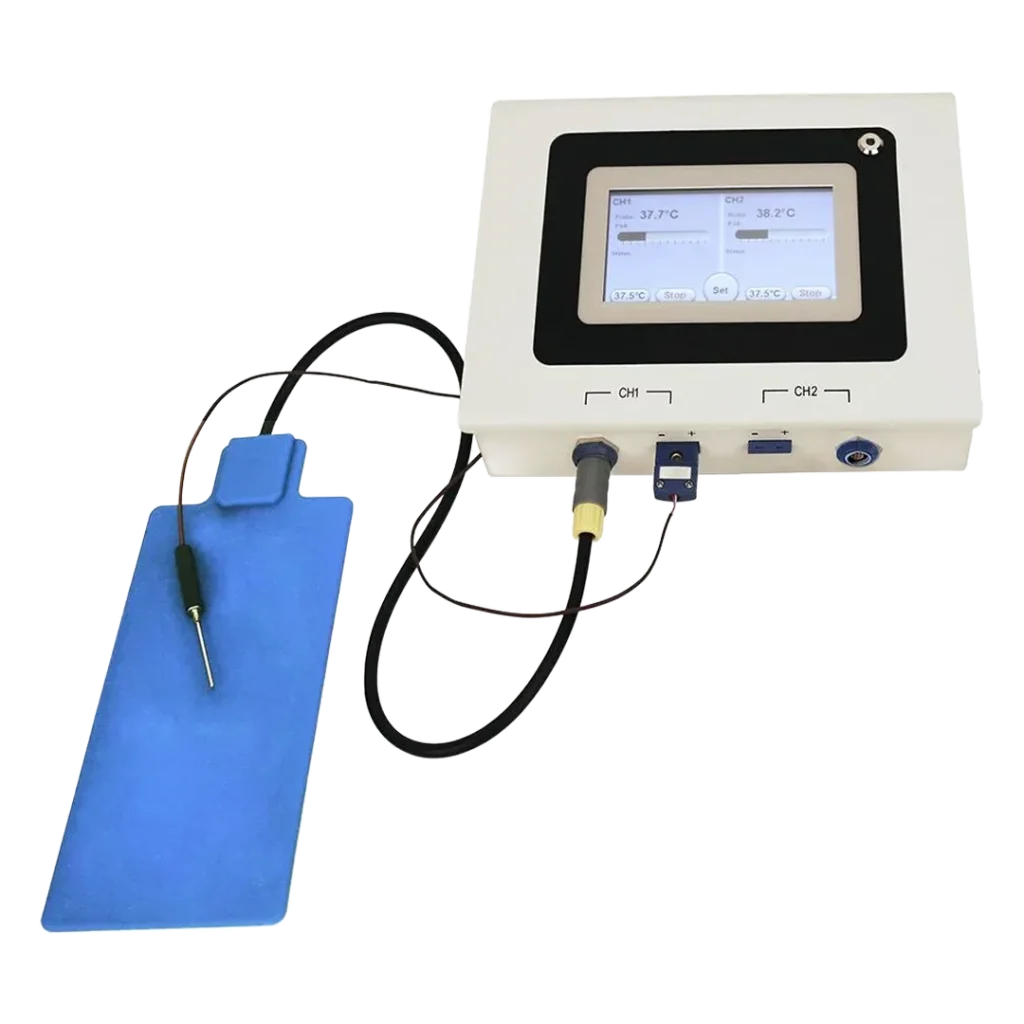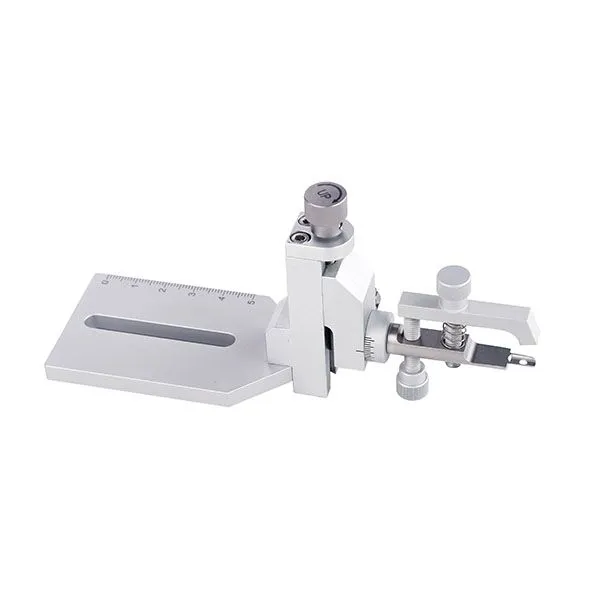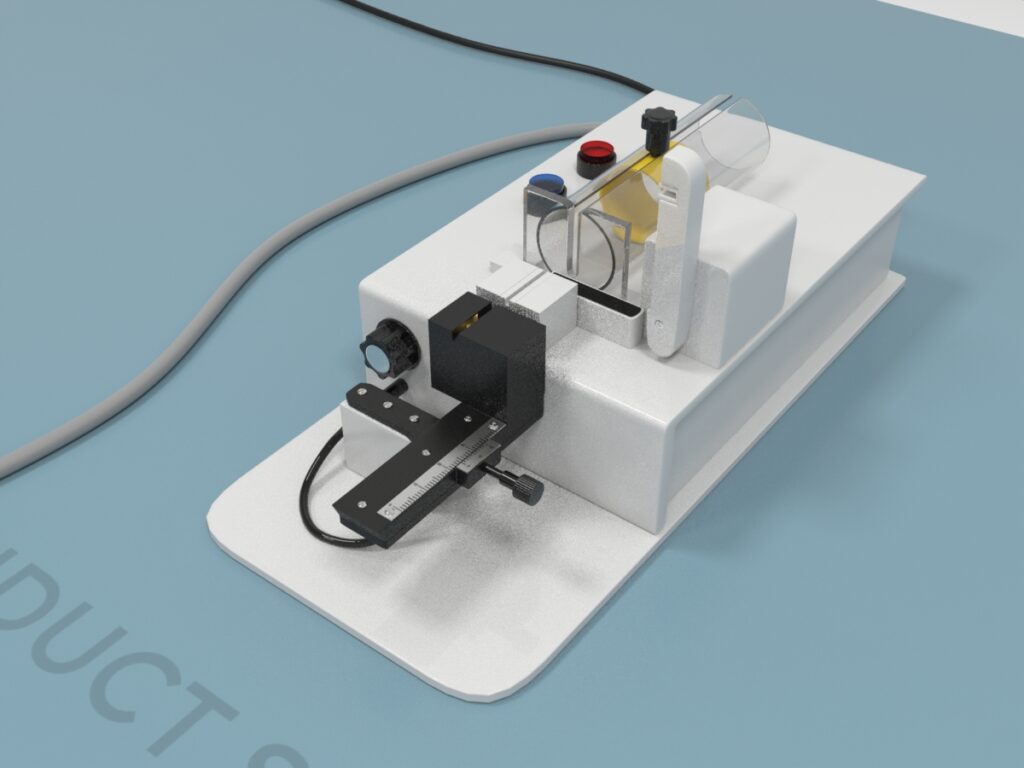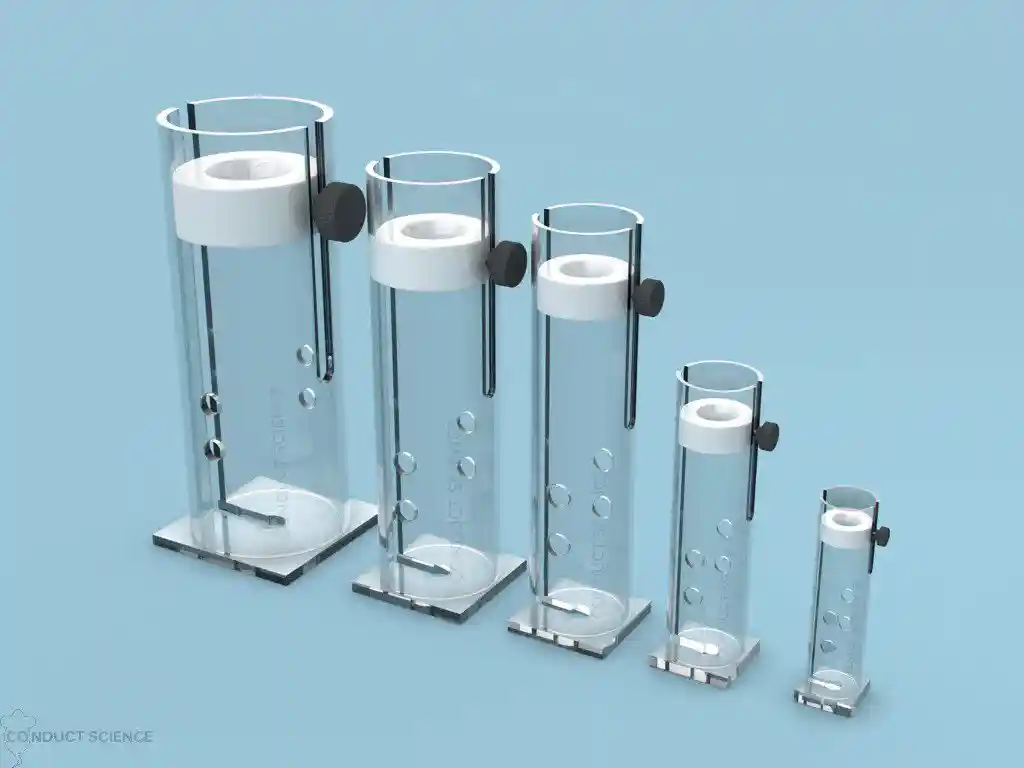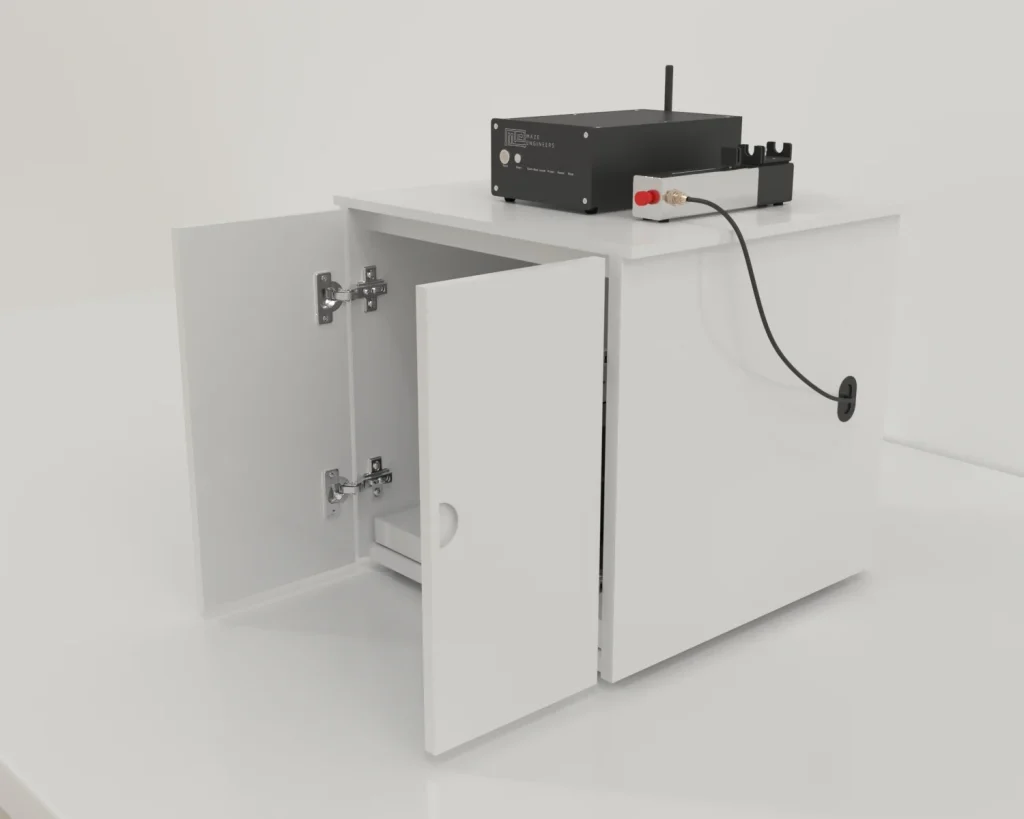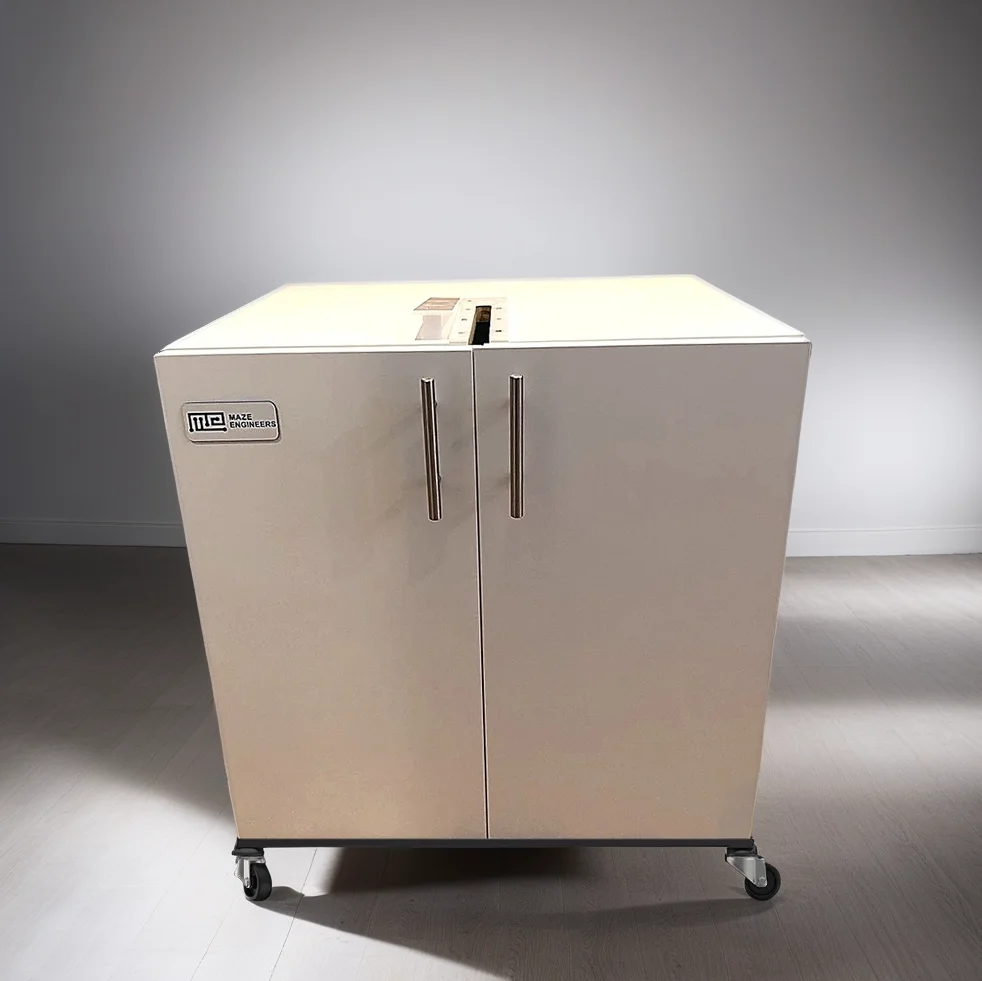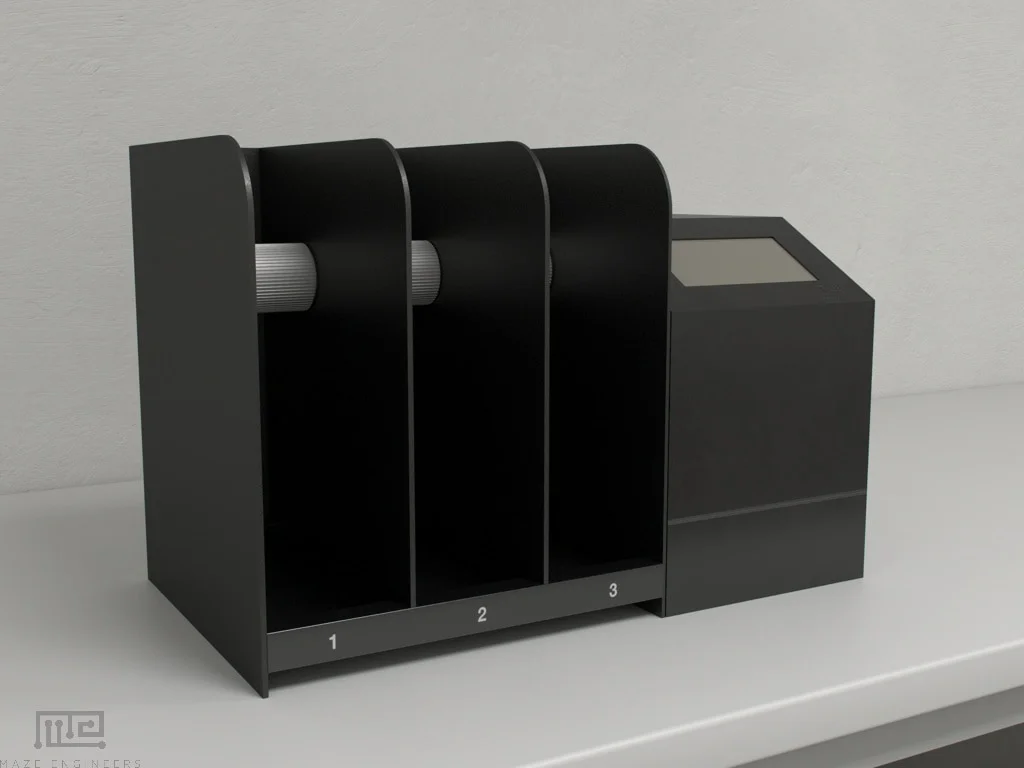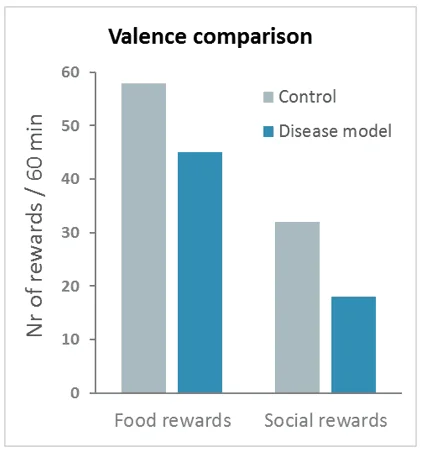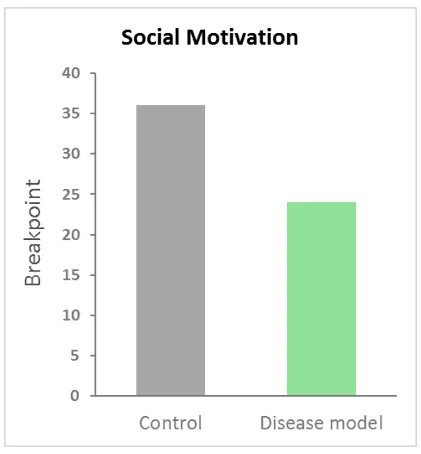The purpose of the Social Motivation Operant Conditioning test is to assess social behavior in rodents in a control vs. disease model/intervention group by quantifying social motivation.
Below are examples of protocols that allow the assessment of social motivation. A more detailed version of these protocols can be found in Martin & Iceberg, 2015.
Pre-training for the Social Motivation Operant Conditioning
Animals can be housed individually or in groups, depending on the experimental needs.
Maintain animals on their ad libitum diet. Although food rewards are used, food deprivation is unnecessary for operant conditioning with the use of an evaporated milk solution sweetened with 0.2% sucrose (Martin et al, 2014).
Test and stimulus animals should be age and sex-matched.
After a few days of habituation to the testing facilities, without handling or food restriction, animals should be handled daily for around 5 min, and for at least 3 days before beginning behavioral training.
Chambers should be cleaned between each testing session and after the conclusion of testing each day using 70% ethanol.
Evaluation of social motivation using the Social Motivation Operant Conditioning test
Social Motivation Paradigm
Training
- Place the test animal in the test chamber and the stimulus animal in the target chamber.
- Train the test animal to press the levers to open the guillotine door using the method of reinforcement of successive approximations to the desired operant response. During the training procedure, deliver reinforcement by opening the guillotine door for 15 sec, thereby allowing access to the stimulus animal through the wire grid.
- Train each animal daily for 30 min until they reach a minimum response criterion (e.g. 10 lever presses in 3 out of 5 consecutive testing sessions).
- Animals that do not reach the minimum response criterion after 30 daily training sessions should be removed from the experiment and designated as non-learners.
- Alternate the stimulus animal used during training so that a different animal is used every other day.
Valence Comparison of Social Vs Food Reward
After all animals complete the social motivation paradigm, test these same animals to compare the valence of the social reward with that of a food reward.
Training
- Program one lever to open the guillotine door and present the social reward for 15 sec and the other lever to present a liquid food reward for 15 sec.
- In each testing group, assign half of the animals to a left lever/food reward and right lever/social reward contingency and the other half to the opposite contingency. Assign test animals to alternate between contingencies to control for potential lever biases among animals.
- Place a test animal in the test chamber and place a stimulus animal in the target chamber.
- Make only one lever/reward contingency active during each training session. Perform daily 1-hour sessions for 6 days that alternate between contingencies each day. Alternate stimulus animals assigned to each test animal every other session.






